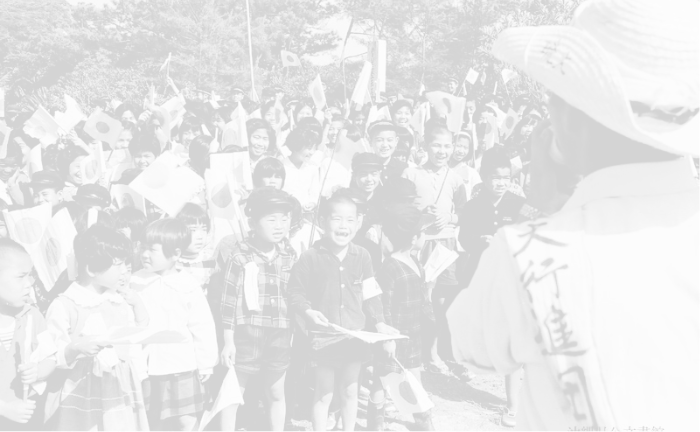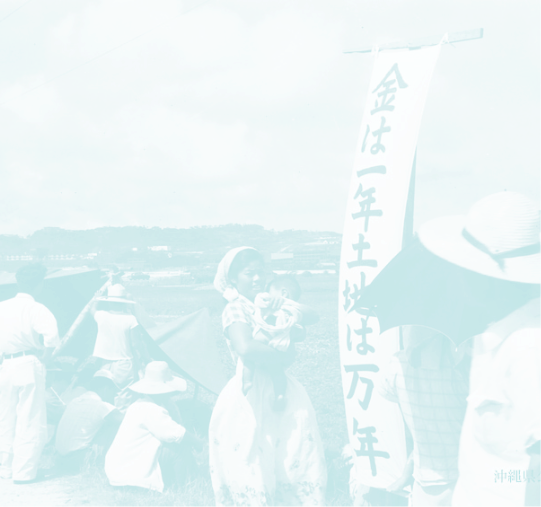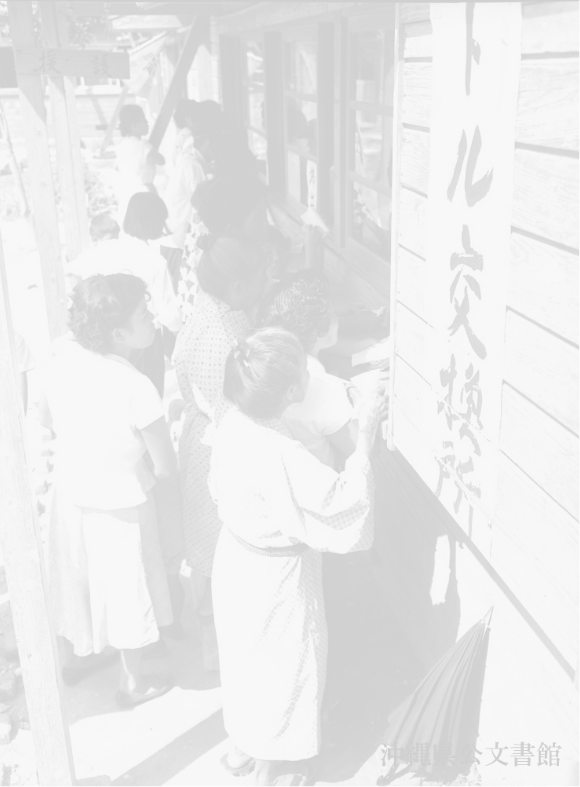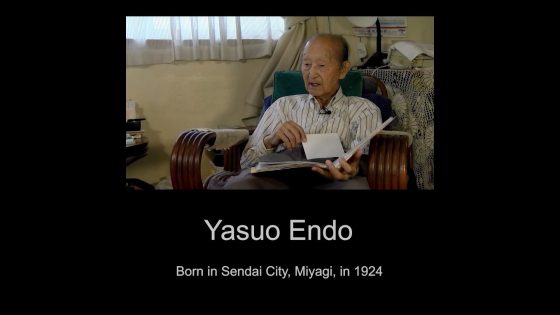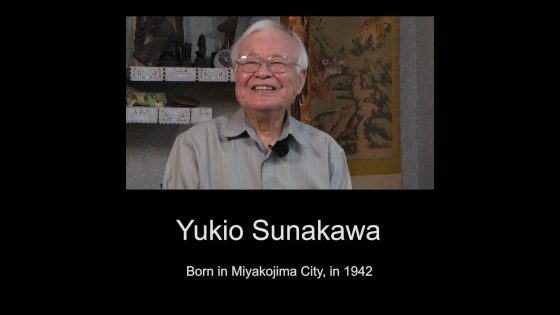
A Boy’s View of Okinawa’s Return to Japan
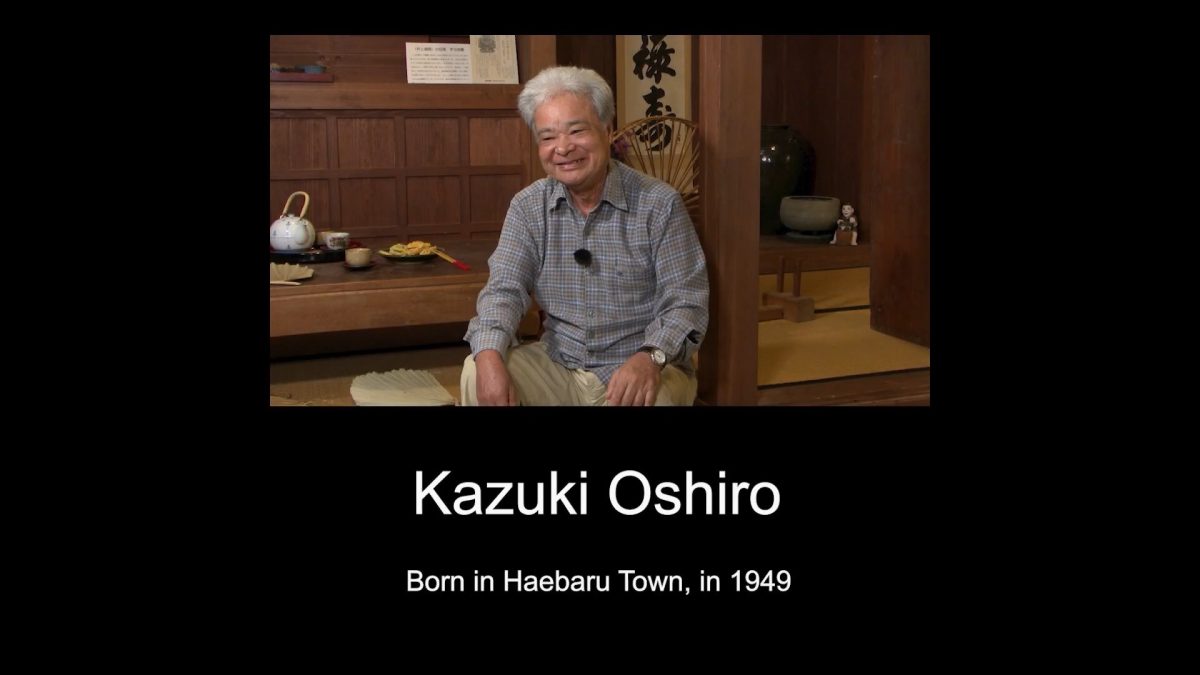

- Born in 1949
- Kazuki Oshiro
Index
Timeline
| 1949 |
Born in Haebaru City.
|
|
|---|---|---|
| 1959 |
Attended a speech meeting held at Naha High School when he was in the 5th grade of elementary school.
|
|
| 1960 |
Watched a parade in Naha when President Eisenhower came to Okinawa.
|
|
| 1965 |
Entered in Chinen High School.
|
|
| 1966 |
Served as vice president of the student council and urged all students to participate in protest rallies and demonstrations.
|
|
|
Participated in the National High School Students' Conference on Buraku Issues. Gave a lecture on the current situation in Okinawa.
|
||
| 1967 |
On February 24, he observed the site of the Struggle to Stop Two Laws from the balcony of a neighboring building.
|
|
|
In November, as a representative of high school students, he gave a speech at the "The Prefectural People's Convention against the US and Japanese Governments”.
|
||
| 1972 |
On May 15, Okinawa's administrative rights were returned to Japan. (Reversion of Okinawa)
|
|
| 1976 |
Worked as an employee of the Haebaru Town (until 2010)
|
Story
Brief biography of the witness
Former director of the Haebabu Cultural Center. Interested in social and political issues since his childhood, he participated in rallies and other events of the Movement for the Reversion of Okinawa among adults. In high school, as a student council officer, he mobilized many students to participate in rallies and demonstrations and also served as a representative speaker. After the return, as an official of the city of Haebaru, he was involved in cultural administration and the designation of the Okinawa Military Hospital as a cultural asset.
A speech rally he saw as a boy before the reversion of Okinawa
Attending a Speech Rally as a Boy
I don't know when it started, but I remember I was in 5th grade. I don't remember if it was April 28th or what kind of rally it was. I heard that the prefectural convention was held at Naha High School, around 5:00 p. m. I also took the Okinawa Bus's Ozato Line to go to Naha High School. I got on the bus in the evening, so it wasn't the time to go to work or go home, but the bus was full and it was very lively. I couldn't find a seat, but I could overhear various conversations. I heard things like, “Kamejiro Senaga's stories are better than Okinawan plays.” “Yes, they are. Tsumichiyo Asato also speaks very well. ” “No, Kamejiro Senaga is the best public speaker. “And so on. Those people speculated about what Kamejiro Senaga would say at the Naha High School speech venue and how he would criticize the US. Until then, I hadn't heard much about Mr. Senaga, but the atmosphere inside the bus intrigued me. The bus headed towards Yogi Park, passed Yorimiya in front of Okinawa University, and turned right at Yogi Crossroads towards Kanzatobaru. There was a restaurant called Nanko Shokudo around the bend. There, a lot of passengers got off. Probably 80, 90% of the passengers got off there. A line of people got off the bus and went up the hill towards Kainan. I followed behind them and went to the Naha High School sports grounds. I think Naha High School's sports grounds were the largest at the time. It was also the permanent venue for the prefectural high school baseball tournament and occupational baseball tournament. Most of the prefectural conventions and protest rallies were held here. The Naha High School sports grounds were both a place for political meetings and a place for sports. When we arrived at the venue, there were many people holding red flags or flags for various organizations. I don't remember where I was, but it wasn't with an organization. There was a staircase around the first base side of the stands, which was little bit far from the grounds, and I may have sat around there. I wanted to hear Kamejiro's speech, so I don't remember much about what other people said. When it was Kamejiro Senaga's turn, everyone was paying attention. He said, “US imperialism should go back to America immediately,” and “Yankee go home,” shaking his body and making gestures. He could have even been foaming at the mouth. The people in the hall made sure not to miss a single word of the speech. With everything he said, they shouted, “Shitaihya [Well done!]” and “Kamejiro!” That was the atmosphere at the venue. I don't remember the details, but I guess I was feeling excited too, and thought, “Ah, Kamejiro is amazing!” I didn’t really understand the situation in Okinawa because I was in fifth grade. I may have thought that if I was in that kind of atmosphere, I would somehow be able to experience some of the movements in society. The US President Eisenhower came to Okinawa in 1960, when I was in 4th or 5th grade.
President Eisenhower’s Visit to Okinawa (1960)
My mother said to me to go see the president of the US. At that time, I didn't even know the name Eisenhower. My mother was a weaver and went to Naha every day to sell cloth at the public market. The exact spot where my mother and I set up camp to see the sights was Kainan. This is probably the area where there was a movie theater called Kainan Ryuei. There were so many people lined up on both sides of the road that the president couldn't be seen. I don't remember clearly whether there was applause, nor whether there were people telling the president to get lost. I just remember being in the middle of that and seeing the presidential parade. Then, around fifth grade, I became interested in the restoration movement and politics. It felt like it was growing little by little, or it was being made to grow.
The Atmosphere in Okinawa at the Time
I could only see what was right in front of me; I couldn't see the whole of Okinawa. The atmosphere of the speech rally at Naha High School gave me a sense of justice, even in fifth grade. From the Okinawan side at the time, the US was wrong, and Okinawa was in the right. “Get out of Okinawa,” “bad guys get out.”
As a student council officer at Chinen High School
Entering Chinen High School
In 1964, the Tokyo Olympics were held, and I was in my third year of junior high school. I entered Chinen High School in April of the following year. There was a teacher there named Keishun Gibe. Mr. Gibe was not an advisor to the student council. However, he appointed me to be the vice president and Tomokiyo Arakawa president of the student council. He had already decided that. Mr. Gibe was a very unique person. When he gave lectures, he would get on the teaching desk like this. He took off his shoes and gave lectures with his legs dangling. It was really interesting, and thanks to this, world history class felt somehow very intimate. I also liked world history, so I also liked Mr. Gibe. So, he appointed me to be the vice president, and I accepted that.
Calling For Participation in a Protest Rally
The student council had a lot of work to do. Our most important role was to participate in the rally on April 28. I called on all the students in the school to participate in the April 28 rally. Since I was part of the student council, I asked all students to cancel all club activities, and told them to meet in Yogi Park, and when. Yogi Park at that time was large, many times larger than it is now. It was a plaza that could hold as many as 100,000 people. I asked all the students to participate. On the day of the event, I went to Yogi Park, and there were about 600 people participating. At that time, Chinen High School had 6 classes in general studies and 2 classes in commerce. And there were 2 home economics classes, so 10 classes in total. There were 30 classes across the three grades. I think there were about 1,200 or 1,300 students in the whole school. Half or more of them gathered at Yogi Park. There, everyone was lined up by school, and about the same number of people attended from Itoman High School. Other students also came from Shuri High School, Hentona High School, Koza High School, and Maehara High School. We student council officers lined the students up. After the speeches at the rally were over, we walked from Yogi Park along Himeyuri Street. We marched from Asato to Kokusai Street in front of the Ryukyu government building. At that time, after the rallies at Yogi Park were over, the next step was a demonstration march. We marched by organization, labor union, teacher group, or school. We followed the teachers at Chinen High School. There was probably a Chinen High School branch of the High School Teachers Association. Mr. Gibu was at the front. It didn't feel like following along. Even walking behind the teachers, we felt that we were in the main role. The line was quite long, 600 people. There were probably about four or five rows across. The road was closed, of course. Three or four of us student council officers held microphones, doing call-and-response chants. When that was over and we got tired, we switched to a French-style protest march. We held hands and spread out across the width of the road, and walked calmly along. And when we said “Yankee go home,” everyone repeated the same thing in unison. When we said, “We’re against the Vietnam War,” they would respond with the same words. When we arrived at Kokusai Street, there were many passers-by along the road and they all clapped. I felt even more excited when we received the applause in support. It was like our existence was being recognized in a way that gave us a sense of purpose in life. I felt that we were acting independently, and that awareness gradually increased. The group was united like this. I think that the desire to cooperate gradually increased, leading to a sense of fulfillment. The next day, when we went to school, we had a conversation about where we had been on the day of the demonstration. No one would go to a demonstration march just because the student council told them to. It's a bit strange to say that it was fun to participate, but I think it's because there's something very energizing about it, and a sense of fulfillment. Songs have great power. When we sang “break the hard soil…” [lyrics from “Return Okinawa”] and “let’s do our best…” [lyrics from “Do Our Best”], I felt that since all Uchinanchu [Okinawans] were on the same page, we should all do our best. Being in such a place made me feel alive even as a high school student.
Mr. Gibe
Mr. Gibe was very straightforward in his way of speaking. That's why I felt so attached to him and understood him. We felt like someone was very close to us. Mr. Gibe was a blunt teacher, but we could feel his love. He didn't give any lectures on his thoughts on Okinawa. He encouraged us to see the scenes and participate. Mr. Gibe didn't talk about his theories. If he talked, students might not be able to follow. In any case, Mr. Gibe took students to the field and taught them to feel and learn for themselves. It was a way of educating people, not just political education, but telling them to feel it for themselves.
Witnessed the scene of struggle against two laws on educational personnel
The Struggle against Two Laws on Educational Personnel
The struggle to stop two particular laws took place in February in 1967. This time, it did not start in the evening like protest rallies. The session of the Legislature of the Government of the Ryukyu Islands opened at 10:00 a. m., so we gathered early in the morning in front of the Legislature. That's why I think the teachers probably went under the policy of giving a certain percentage of their annual leave. From Chinen High School, I was the only person nominated to participate. I had a responsibility to witness it. It meant that I need to see it and learn from it. I also took a day off and went to the Legislature. The Legislature at the time was located around where the prefectural police headquarters is now, and across from it was the Rainbow Hotel. There were about 10 people on the balcony on the third floor of the hotel. That was the best place to watch from. Riot police and teachers were swaying against each other like waves. I saw scenes like this several times. The riot police were standing in front of the Legislature, to prevent the teachers' union from entering. I could clearly see the crowd rushing toward the riot police like an avalanche, and then the riot police would pull back and then push back a little. And several times I saw teachers pull out riot police from the group. The teachers would grab one of the riot police, and five or six teachers would start pulling, to pull them over to our side. When one person succeeded, we applauded and cheered from the hotel, saying, “Keep it up!” This happened several times. So the demonstrators absolutely had the advantage. There were hundreds of riot police, against tens of thousands of demonstrators. The demonstrators had overwhelming numbers, and the teachers, labor unions, and other groups blocked them from opening the Legislature, so the laws were scrapped. So, about those two laws. One was the Special Rules for the Public Educational Personnel and Staff Act, and the other was the Local Educational District Public Employees Act. These included restrictions on teachers' political activities, which we opposed. At that time, the restoration movement was in full swing, so the struggle to stop these laws was similar. It was like a part of the restoration movement, an activity to expand autonomy reform. So the teachers won and forced the proposals to be scrapped. I think Mr. Gibe wanted me to check out the scene. He didn't talk about his own theories, but wanted us to learn from the actual site. He never said anything. He didn’t even ask if I saw it or not after it was over. He didn't ask anything about how it went, but that was fine. He never asked me to write a report. I was impressed with Mr. Gibe's humanity. Perhaps the High School Teachers Association had a policy of teachers working together to develop high school students into young Okinawans who would be interested in political matters as well. So Mr. Gibe took me all over the place.
As a representative of Okinawan high school students
High School Students’ Representative Speech at the Protest Rally
We went to a protest rally in November 1967, to prevent Prime Minister Sato from going to the US to negotiate the Okinawa Reversion Agreement, since the details of the agreement were almost clear. Mr. Gibe just told me, “Next is Yogi Park,” and I understood what he meant. If you looked at the newspapers, you would learn that there was a protest rally at Yogi Park. There was a protest rally against Prime Minister Sato visiting the US, and the venue was Yogi Park. He nominated me so I had to think of what to say as the representative, but he didn't give me any guidance. I came up with all the greetings myself. I guess it was because I was entrusted with the task, or rather, I was trusted with it. He didn’t even look at manuscripts. He even never checked drafts. Anyway, I think that's all he said about greetings. I don't remember exactly, but I do remember the first words: “We don't know about war; we were born after the war. However, we learned about the situation in Okinawa after the war from our parents, older students, and teachers at school, as well as the present situation. That's why we, as high school students, have that kind of interest, and we started participating in protest rallies. ”Not only me, but many other high school students also participated. The students at Koza, Futenma, and Itoman were all learning from their teachers and parents. I wasn't just talking about myself. I was talking about all the students who participated. There must have been incidents and accidents related to the US military. Since I lived under such conditions in Okinawa, I came to want to convey that feeling even to high school students. …I think I said something like that. I remember that the platforms of three large trucks were used as podiums. I couldn’t see the people in attendance. In any case, there were a lot of people. As for some of what I heard, there were so many people that they couldn't sit down, so when the host said, “Please sit down,” someone responded, “We don't have any land. “I thought it was a wonderful reply. At that time, there was a problem with land being expropriated. The land was being taken from many places, such as Konbu [now Uruma City]. I heard “we don't have any land to sit on, so give us back our land” and there was lots of applause. So the rally became very lively. In my case, it felt more like just a talk than a speech. I wasn’t sure about the reaction, but my brother told me, “Good job. “It wasn't that hard to speak in front of people. The reason why Mr. Gibe made me have that experience is he wanted me to stay in Okinawa and do something for Okinawa in the future.
Participating in the National Gathering on Buraku Issues
Mr. Gibe said, “Next is Kyoto. “Until I went to Kyoto, Buraku discrimination was not well known in Okinawa, and I didn't know about it either. The Buraku caste was considered unclean and sub-human, and there were efforts to educate the public about human rights. In Kyoto, there was a national gathering of Buraku high school students. Mr. Gibe invited me to go with him, and I was taken to Tomari Port. To go to mainland Japan, we needed passports and vaccinations. We arrived at Kagoshima Port after 17 hours on the ship Himeyuri-Maru. I remember it clearly. From the station, I boarded the Kirishima No. 2 bound for Osaka, at 8:23. There were about 1,590 students from 218 schools in 14 prefecture sat the national gathering. This demonstrated the scale and the depth of the Buraku issue, so I think Buraku people faced issues everywhere. There was a subcommittee session on the first day, and a plenary session on the second day. During the plenary session, I gave a presentation on reports from Okinawa. What I talked about was the current situation and political situation in Okinawa at that time. At the time, there were what were known as the “Tomori Trial” and the “Saury Case.” The Tomori Trial was a lawsuit filed by Mr. Tomori, who had been elected as a member of the Legislature and had his election invalidated. There was also the issue of the case being transferred to the US military court just before the trial. The Saury Case was another case where the trial was transferred from an Okinawan court to a US government court. I talked about those things. Even in high school, we talked about classes being interrupted due to loud noises from the base and various other incidents and accidents. It was my first time learning about Buraku issues, which were obviously a form of discrimination. Okinawa also faced discriminated by the Japanese government. I think Mr. Gibe wanted me to learn that Buraku issues and Okinawan issues are connected in some way. It's a problem of discrimination, and there was discrimination on the mainland as well. It must connect somehow with discrimination against Okinawa. Even Okinawan high school students needed to learn about the problems of Japanese high school students. I thought I wouldn't be able to connect with Japanese high school students at the rally in Kyoto. Since we were far away and didn't have a place to interact, but participating would help us connect. This created a sense of camaraderie, and a sense of solidarity. Understanding each other's problems. The specifics might differ, but the roots connect somehow or other. I think Mr. Gibe wanted me to learn that as well. He was a great educator, now that I think about it. There is an Okinawan saying, “Sottaku-no-Ki. “Chicks hatch from chicken eggs. The chicks hatch because the parent warms them from the outside, and pecks the shells. The shells won’t break without being warmed. And the chicks peck from inside the shell, too. The parent warms up the shell and pecks it. The chick pecks from inside at the same time, and the chick hatches from the egg. This kind of thing is called “Sottaku-no-Ki. “Looking back now, I think the teachers probably wanted to help me “hatch. “The teachers would kindly watch over me and lead me. They wanted me to learn for myself, and crack the shell open myself. Teachers never said things like that, but when I think about it now, I realize that how they treated me represented the true depth of my education. During high school, students studied and gradually became more enlightened under the guidance of their teachers. The teachers took the lead. There was such a relationship of trust between students and teachers.
Message to Younger Generations
Message to Younger Generations
Children may not read newspapers now. They don't watch much TV news and they live on smartphones, and they don't really talk with their parents. Moreover, their parents don’t remember the Battle of Okinawa either. Maybe their grandparents don’t, either. Even my own generation didn’t experience it. The main thing that is familiar to me is that the situation in Okinawa has not changed. It seems like things have changed, but they haven't. I want children today to be interested in things that are familiar to them. We should create home atmospheres where everyone reads newspapers regularly, but don’t just suddenly say “study this” or “you need to watch this video. “First and foremost, the most important thing is to develop your sensibilities. Bad is bad, good is good. This is not only true in war. I believe that if we raise our children to be sensitive, they will definitely be able to recognize the postwar situation and the problems of war. That's why I want the children of Okinawa to grow up to be sensitive. The specifics don’t really matter. If you read books and develop your sensibilities, I think there's a good chance your interests will lead you to places like learning about the Battle of Okinawa.
RELATED
Involvement in Social Education Activities in Miyako after the War
- Born in 1942
- Yukio Sunakawa
